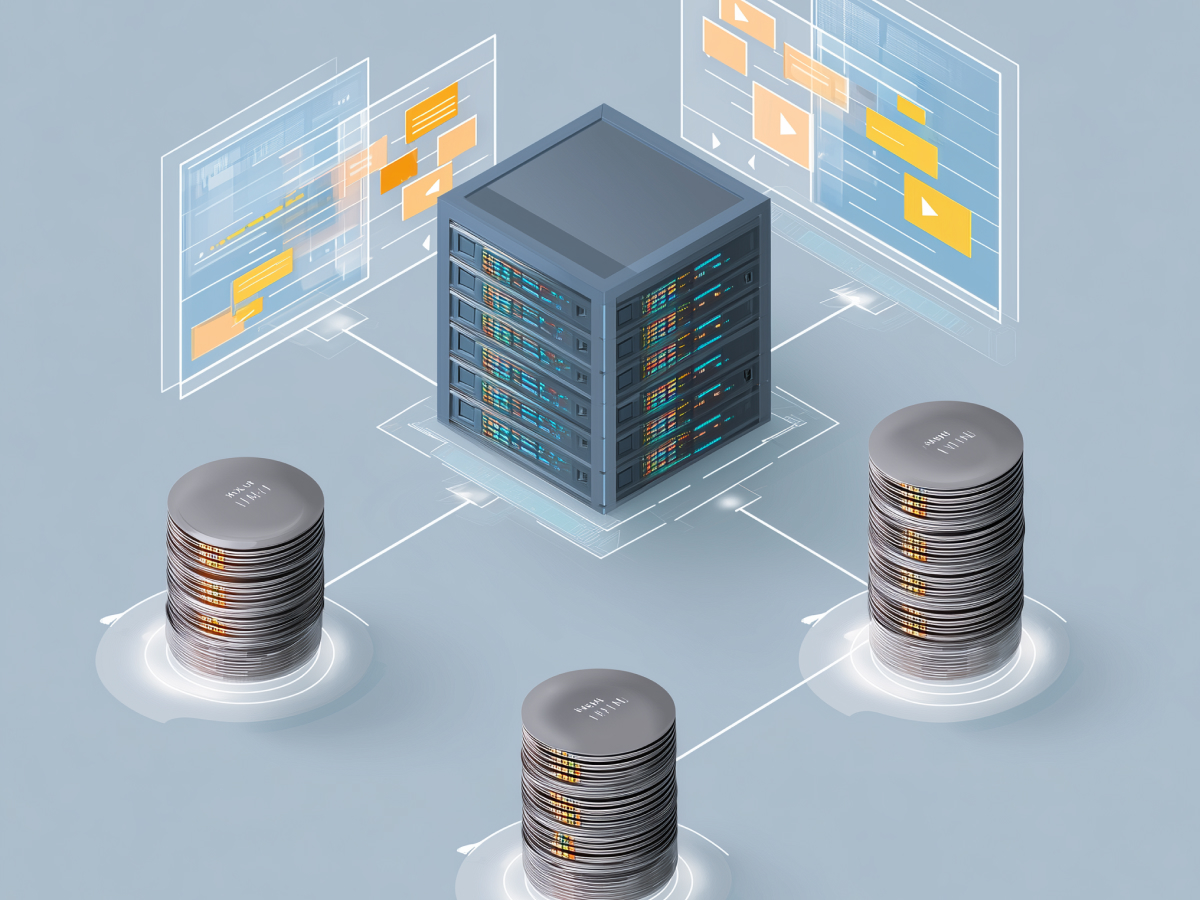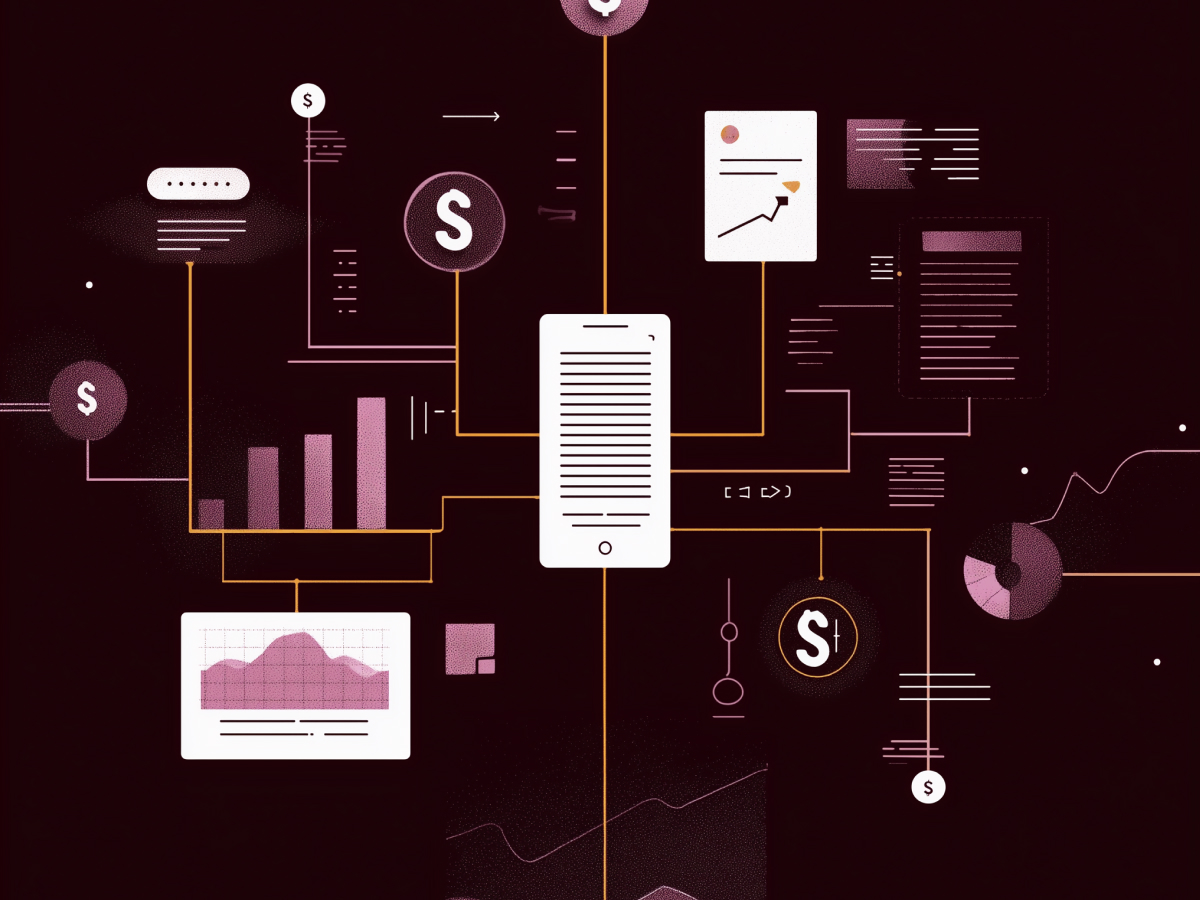Scaling is essential. As companies grow, infrastructure demands increase, necessitating strategic decisions on how to scale effectively. Choosing between vertical and horizontal scaling is crucial, with each offering unique benefits and challenges.
Why your business needs the right strategy
Today, a comprehensive scaling strategy is invaluable. Growth isn’t only about more customers; it’s about making sure your infrastructure can handle increased demand efficiently and cost-effectively.
The right strategy can mean the difference between smooth operations and significant downtime, making it key to long-term success.
As businesses expand, their infrastructure must evolve to support increased demands. Scaling is key for growth and maintaining performance, productivity, and efficiency. Without proper scaling, bottlenecks can slow operations, frustrate customers, and lead to lost revenue, making scaling vital for maintaining a competitive edge.
How scaling fuels your competitive edge
Scaling isn’t optional for competitive businesses. Effective scaling lets companies accommodate growth without sacrificing service quality. It improves both capacity and agility, giving quick pivots in response to market changes.
Companies that master scaling often outperform peers, delivering consistent, high-quality service, and gaining market share and customer loyalty.
The core concepts you need to know
Understanding system scaling basics is crucial for making informed decisions that impact future operations. Whether increasing the capacity of current infrastructure or expanding with new resources, the right scaling approach can significantly affect operational efficiency and the bottom line.
What system scaling and why it matters
System scaling involves adjusting IT infrastructure to handle increased load and traffic. It can mean upgrading existing resources (vertical scaling) or adding new ones (horizontal scaling). The goal is to grow infrastructure without disruptions or performance issues.
As customer expectations rise, efficient scaling becomes critical for maintaining a competitive advantage.
System scaling means strategically increasing resources to support growing operational demands. Expansions must be straightforward and non-disruptive to maintain business continuity.
Achieving this often requires hardware enhancements—like adding memory, storage, and processing power—along with software upgrades to improve user experience, agility, and reduce maintenance costs, all important for sustaining growth.
Which scaling paths will you take?
There are two primary methods for scaling infrastructure: vertical and horizontal. Each has strengths suited to different scenarios. Understanding which path to take is essential for optimizing performance and aligning with business goals.
Scaling up
Vertical scaling, or scaling up, boosts existing infrastructure capacity. It can involve upgrading or replacing components like memory, storage, and servers, allowing current systems to handle more workload without significant software or architectural changes. It’s a straightforward approach that delivers increased performance with minimal disruption.
Scaling out
Horizontal scaling, or scaling out, adds machines, servers, or nodes to existing infrastructure. Scaling out distributes workloads across multiple resources, improving system redundancy and reliability. It’s particularly effective for businesses anticipating continuous growth, providing the flexibility to scale without hitting hardware limitations.
Why vertical scaling is your go-to strategy for quick wins
Vertical scaling simplifies boosting infrastructure capabilities without complex architectural changes. It’s ideal for businesses needing immediate performance gains and simplified management. While there are limitations, such as hardware thresholds and potential downtime, it remains a powerful tool for organizations needing rapid, efficient scaling.
Key traits and benefits
Vertical scaling maximizes the potential of existing infrastructure. When upgrading key components, performance is improved without altering software or workflow. Such an approach suits businesses needing to scale quickly while avoiding the complexity of managing multiple systems.
Boosting your infrastructure
Vertical scaling upgrades current machines to increase capacity, focusing on enhancing memory, storage, and processing power. It is a method that supports more users or processes larger datasets without overhauling the entire system. It’s cost-effective, especially for companies in early growth stages.
Top benefits of scaling up
One of the main benefits of vertical scaling is its simplicity. Since it involves managing a single node, setup is straightforward, and maintenance is less complex. Additionally, data inconsistency risk is minimized when all data resides on one machine. Upgrading hardware also directly boosts performance, making vertical scaling highly efficient for handling increased workloads.
- Keep it simple: Vertical scaling simplifies operations by keeping everything within a single system. It reduces the need for complex synchronization processes, making infrastructure easier to manage and maintain. For many companies, this ease of implementation is a significant advantage, particularly when speed is essential.
- Supercharge performance: Vertical scaling provides immediate performance improvements. Upgrading to multi-core processors and advanced servers significantly increases a system’s ability to handle increased demand.
- No code overhaul needed: Vertical scaling typically requires minimal changes to existing code, giving increased processing capacity and efficiency without extensive software reengineering.
Vertical scaling’s dark side
Despite its advantages, vertical scaling has downsides, including hardware limits, downtime during upgrades, and the risk of a single point of failure. Understanding these limitations is essential for making an informed decision about whether vertical scaling is the right choice for your business.
How vertical scaling hits hardware limits
Vertical scaling can provide significant performance gains, but it’s ultimately limited by hardware constraints. As components like memory and storage are upgraded, systems may reach their maximum capacity.
Further scaling becomes impossible without a complete overhaul, which can be costly and time-consuming.
A significant challenge of vertical scaling is the potential for downtime during upgrades. Since the entire system relies on a single machine, any enhancements require taking it offline, disrupting operations. While backup servers can mitigate this issue, they add complexity and cost.
Vertical scaling consolidates operations onto a single machine, which can be risky. If that machine fails, the entire system could go down, leading to significant data loss and downtime. A single point of failure is a major risk that businesses must consider when choosing to scale vertically.
Why horizontal scaling might be your best long-term play
Horizontal scaling offers a flexible, resilient growth approach, expanding infrastructure by adding more machines or nodes. It is a method that handles increasing demand without hardware limitations and improves fault tolerance by distributing operations across multiple systems.
While more complex to implement and maintain, horizontal scaling is often the preferred choice for companies planning long-term growth.
Key features you’ll love
Horizontal scaling spreads operations across multiple systems, providing significant benefits in reliability, scalability, and load management. When adding resources, growth continues without the constraints of a single machine’s capacity.
Horizontal scaling increases infrastructure capacity by adding more machines, servers, or nodes. It’s a method that distributes the computational workload, significantly improving performance and reliability. It also supports continued scaling without vertical scaling’s limitations, making it smart for businesses anticipating long-term growth.
Why scaling out is game-changing
Horizontal scaling offers a comprehensive solution for businesses looking to maintain high availability and performance. Distributing operations across multiple nodes reduces the risk of a single point of failure and gives smoother upgrades. It’s effective for organizations needing to handle large-scale, complex applications requiring significant computing power.
One of the most significant advantages of horizontal scaling is improved fault tolerance. Since operations are spread across multiple machines, one node’s failure doesn’t necessarily impact the entire system.
How horizontal scaling breaks hardware barriers
Horizontal scaling isn’t constrained by the physical limits of hardware, letting businesses add resources as needed. Flexibility is ideal for companies expecting continuous growth. Adding nodes avoids bottlenecks that often accompany vertical scaling, making sure the system remains responsive and efficient.
Mastering load distribution with horizontal scaling
Horizontal scaling gives effective load distribution, key for managing high traffic and processing demands. Spreading the workload evenly across multiple nodes prevents any single machine from becoming overwhelmed.
The challenges of horizontal scaling
While horizontal scaling offers many advantages, it’s not without challenges. Implementing and maintaining a horizontally scaled infrastructure is more complex than vertical scaling, requiring additional resources for load balancing, virtualization, and node synchronization.
Additionally, managing data consistency across multiple nodes can be difficult, especially in systems requiring real-time data processing. Some of the major challenges of horizontal scaling are:
- Complex setup: Horizontal scaling involves adding and managing multiple nodes, increasing infrastructure complexity. Setup requires additional hardware and sophisticated software to make sure all nodes work cohesively. The complexity can lead to higher initial costs and a steeper learning curve for IT teams, making it more resource-intensive compared to vertical scaling.
- Data consistency issues: Data consistency is a challenge in horizontally scaled systems, especially with distributed databases or real-time applications. Since each node operates independently, confirming that all nodes have the most up-to-date information can be difficult. Inconsistent data can lead to errors, delays, and reduced performance, making it important to implement comprehensive synchronization and communication protocols to mitigate risks.
- Load balancing essentials: Effective load balancing is key for horizontal scaling, making sure workloads are evenly distributed across all nodes. Without proper load balancing, some nodes may become overburdened while others are underutilized, leading to inefficiencies and potential failures. Implementing a reliable load balancer is invaluable for maintaining system performance and smooth operations in a horizontally scaled infrastructure.
Vertical vs. Horizontal—Which wins?
When deciding between vertical and horizontal scaling, businesses must weigh costs, performance, and long-term scalability. Both approaches have strengths and limitations, and the right choice depends on specific needs, resources, and growth projections.
Understanding key differences helps in making informed decisions aligned with strategic goals.
What’s the price of vertical vs. horizontal?
Cost is a significant factor when choosing between vertical and horizontal scaling. Vertical scaling is often more cost-effective upfront, involving hardware upgrades rather than purchasing new machines. However, it’s limited by hardware capacity, leading to increased costs over time as limits are approached. Horizontal scaling, while more expensive initially due to additional hardware and software needs, offers greater flexibility and long-term scalability.
Horizontal scaling costs
Horizontal scaling typically involves higher initial costs, requiring the purchase of additional machines, servers, or nodes, and implementing complex load balancing and synchronization systems. Re-architecting software to accommodate a distributed infrastructure can also add costs. However, long-term benefits, such as improved fault tolerance and unlimited scalability, often justify the investment, especially for companies expecting sustained growth.
Vertical scaling costs
Vertical scaling is generally more affordable in the short term, involving hardware upgrades rather than adding new machines. It’s an approach that is cost-effective for companies with limited budgets, as powerful multi-core machines can handle increased workloads without extensive new infrastructure. However, vertical scaling has limits, and once maximum hardware capacity is reached, further upgrades become costly and less effective.
Performance and reliability
Performance and reliability are critical considerations when choosing a scaling method. Vertical scaling offers immediate performance improvements by upgrading hardware but is limited by a single machine’s capacity.
Horizontal scaling, on the other hand, distributes the workload across multiple machines, providing greater reliability and resilience. The choice depends on the complexity of applications and the level of performance and reliability required.
Horizontal scaling performance
Horizontal scaling excels in environments where reliability is key. Distributing operations across multiple machines reduces the risk of a single point of failure, ensuring the system remains operational even if one node fails.
Horizontal scaling is particularly effective for complex, resource-intensive applications requiring high availability and fault tolerance. However, horizontal scaling can introduce latency and complexity, which must be carefully managed to maintain optimal performance.
Vertical scaling performance
Vertical scaling is often preferred for simpler applications that don’t require distributed processing. Upgrading a single machine achieves significant performance gains without managing multiple nodes’ complexity. This method is also more straightforward to implement and maintain, ideal for businesses needing quick, reliable performance improvements without horizontal scaling’s overhead.
Which scaling approach offers more scalability?
Scalability is key in determining the right strategy. Vertical scaling offers immediate benefits but is limited by hardware constraints. Horizontal scaling, while more complex and costly, provides virtually unlimited scalability, making it better for long-term growth ambitions.
Horizontal scaling is better for long-term scalability. Adding more machines or nodes allows infrastructure expansion indefinitely, avoiding vertical scaling’s limitations. It’s a method that allows more flexible upgrades, adding resources without taking the entire system offline.
Vertical scaling, while effective in the short term, is constrained by hardware limits and often requires downtime during upgrades, making it less suitable for aggressive growth targets.
Making the right choice for your business
Choosing the right scaling strategy profoundly impacts performance, cost structure, and growth potential. Understanding the key differences between vertical and horizontal scaling allows informed choices aligned with company needs and long-term goals.
The decision between vertical and horizontal scaling depends on current infrastructure, budget, and growth projections.
Each method offers distinct advantages and challenges, and understanding these differences is important for making the right choice. When choosing between vertical and horizontal scaling, consider specific computational workload requirements, budget, and long-term needs.
Vertical scaling offers quick, cost-effective performance improvements but is limited by hardware constraints and potential downtime. Horizontal scaling, while more complex and expensive, provides greater flexibility and resilience, making it the preferred choice for aggressive growth plans.





